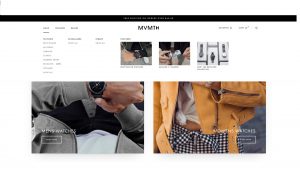Apps are now an essential pillar in mainstream media, But as of 2016 Fortune discovered that more than 75% of app downloads are opened once and then never again. As such, this has led to a highly saturated market with very few apps taking off with repeated access from users. Many believe that the answer to this may lie with user interface.
Galitz’s 2007 book takes an exploration into the importance of strong user interface (UI) in rising media, from screen design to user perspective, 14 steps were established for effective user interface design:
- Know your user or client
- Understand the business function
- Understand the principles of good screen design
- Develop system menus and navigation schemes
- Select the proper kinds of windows
- Select the proper interaction devices
- Select the proper screen based controls
- Clear text and messages
- Provide effective feedback and guidance
- Accessibility
- Meaningful graphics, icons and images
- Proper colour schemes
- Test, test and retest
Using these, UI was thought to be the most essential part of a computer system, and so the goal of interfaces were simple: To make working with a program easy, productive, and enjoyable. As a result, the world of mobile apps and UI has taken huge leaps to better optimise themselves for the current digital climate looking at 4 key areas.
Optimised user flow
It is essential to understand how users interact with an app to assist developers in creating a smooth user experience. This can be done via:
- Chunking big tasks such as a checkout process into a number of steps
- Using information already held on users (i.e. uber already using known location to help setting pick up points)
- Maintain momentum by providing a clear next step for users to go onto
Cut out clutter
Good UI is commonly depend on ensuring the relevant information is clearly available and the more cluttered information is not left taking up valuable space on already limited mobile devices. This can be done effectively by showing only what is necessary on the current step of the flow. i.e. when users are making decisions, reveal the information relevant to allow them to make a decision then go into more detail in following pages.
Tap targets & the thumb zone
It is also pivotal to understand the imitations of the mobile screen real estate. It is essential that actionable elements of interfaces are large enough to be easily pressed without error. As a general rule of thumb, design controls must have a general area of 7-10mm with a suitable amount of spacing between targets to avoid input error.
To incorporate this effectively, it is integral to consider the ‘thumb zone’. This involves not only making sure targets are large enough, but also understanding how we hold our phones. Only one third of our phone screens are comfortably accessible, this is known as the natural thumb zone. targets out of this area require stretching or changing of hand placement. It is important to understand this concept when developing a new app to ensure the gestures required for functionality are intuitive.
When it comes to intuitive gestures, Thomas Joos (2013) surmised in his article “Beyond the button: Embracing the gesture driven interface” that the biggest downfall of app gestures, is the learning curve. Gestures are often hidden with little explanation, so it is imperative that if apps wish to be succesful, they incorporate commonly known gestures that allow a fluidity in how easily the app can be worked.
Create a multichannel experience
Finally comes the importance of providing a multi-channel experience for users to effortlessly shift from platform to platform with little work. This will boost the maximum amount of time a user stays on the app and in doing so may boost engagement as well as possible sales conversions. It would be beneficial for those who make use of an app to invest more in development to ensure the migration of platforms runs smoothly.
Check back for more content!
Joos, T. (2013). Beyond The Button: Embracing The Gesture-Driven Interface. [online] Smashing Magazine. Available at: https://www.smashingmagazine.com/2013/05/gesture-driven-interface/#the-learning-curve [Accessed 4 Apr. 2018].
Galitz, W.O., 2007. The essential guide to user interface design: an introduction to GUI design principles and techniques. John Wiley & Sons.
Fortune. (2016). Here’s How Hard It Is to Get People To Use Your App. [online] Available at: http://fortune.com/2016/05/19/app-economy/ [Accessed 4 Apr. 2018].
Aarabi, P. (2013). 5 tips for creating great mobile app user interfaces. [online] VentureBeat. Available at: https://venturebeat.com/2013/04/08/5-tips-for-creating-great-mobile-app-user-interfaces/ [Accessed 4 Apr. 2018].
Aarabi, P. (2014). Mobile User Interfaces: A Look at the Future. [online] WIRED. Available at: https://www.wired.com/insights/2014/01/mobile-user-interfaces-look-future/ [Accessed 4 Apr. 2018].












